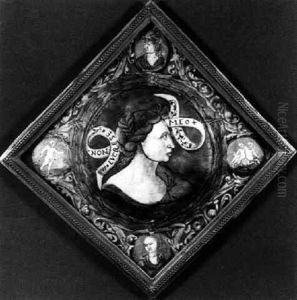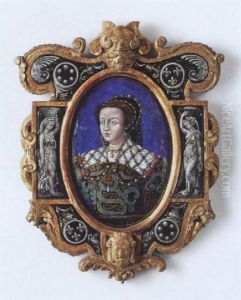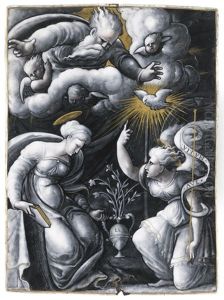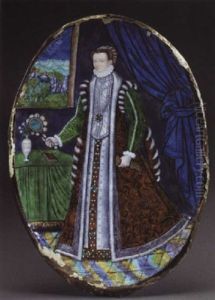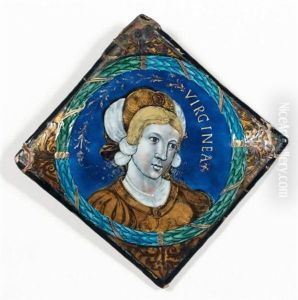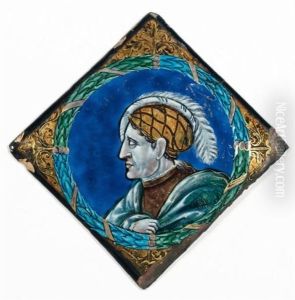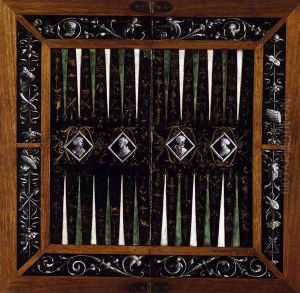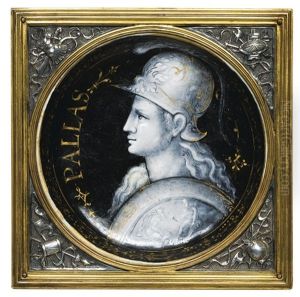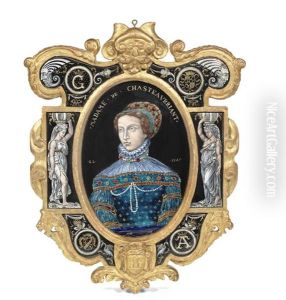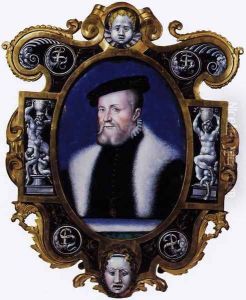Leonard Limosin Paintings
Leonard Limosin was a prominent French painter and enameler of the 16th century, renowned for his exquisite works in the Limoges enamel technique. Born around 1505 in Limoges, France, Limosin grew up in a period that was ripe with artistic fervor, part of the broader Renaissance movement sweeping across Europe. This era was marked by a renewed interest in the arts, science, and the classics, providing a fertile ground for Limosin's talents to flourish.
Limosin's career is mostly associated with the city of Limoges, which became synonymous with the finest enamel work of the time. He is particularly celebrated for his work in painted enamels, a technique involving the application of colored vitreous enamel onto a metal base, then firing it to achieve vibrant colors and a durable finish. Limosin was appointed as the official painter and enameler to King Francis I of France, a position that significantly bolstered his reputation and career. His works for the French court, including portraits of royalty and nobility, religious items, decorative plates, and other objects, were highly prized for their intricacy, color, and detail.
Throughout his career, Limosin was influenced by the Italian Renaissance, evident in his use of perspective, composition, and his thematic choices, blending religious and mythological subjects with portraits and scenes from contemporary life. His enamels are characterized by their vivid colors, delicate figures, and detailed landscapes, which set new standards for the art form. Despite the challenges of the Reformation and changing tastes over time, Limosin's work remained sought after, with patrons including not just the French court but also church officials and private collectors.
Leonard Limosin is often considered the most important and talented enameler of his generation. His contributions went beyond his own creations; he played a crucial role in advancing the technique of Limoges enamel and establishing it as a major art form. Limosin passed away in 1577, leaving behind a legacy that would influence European enamel work for centuries. Today, his pieces are held in high esteem, showcased in museums around the world as quintessential examples of Renaissance enamel art.
